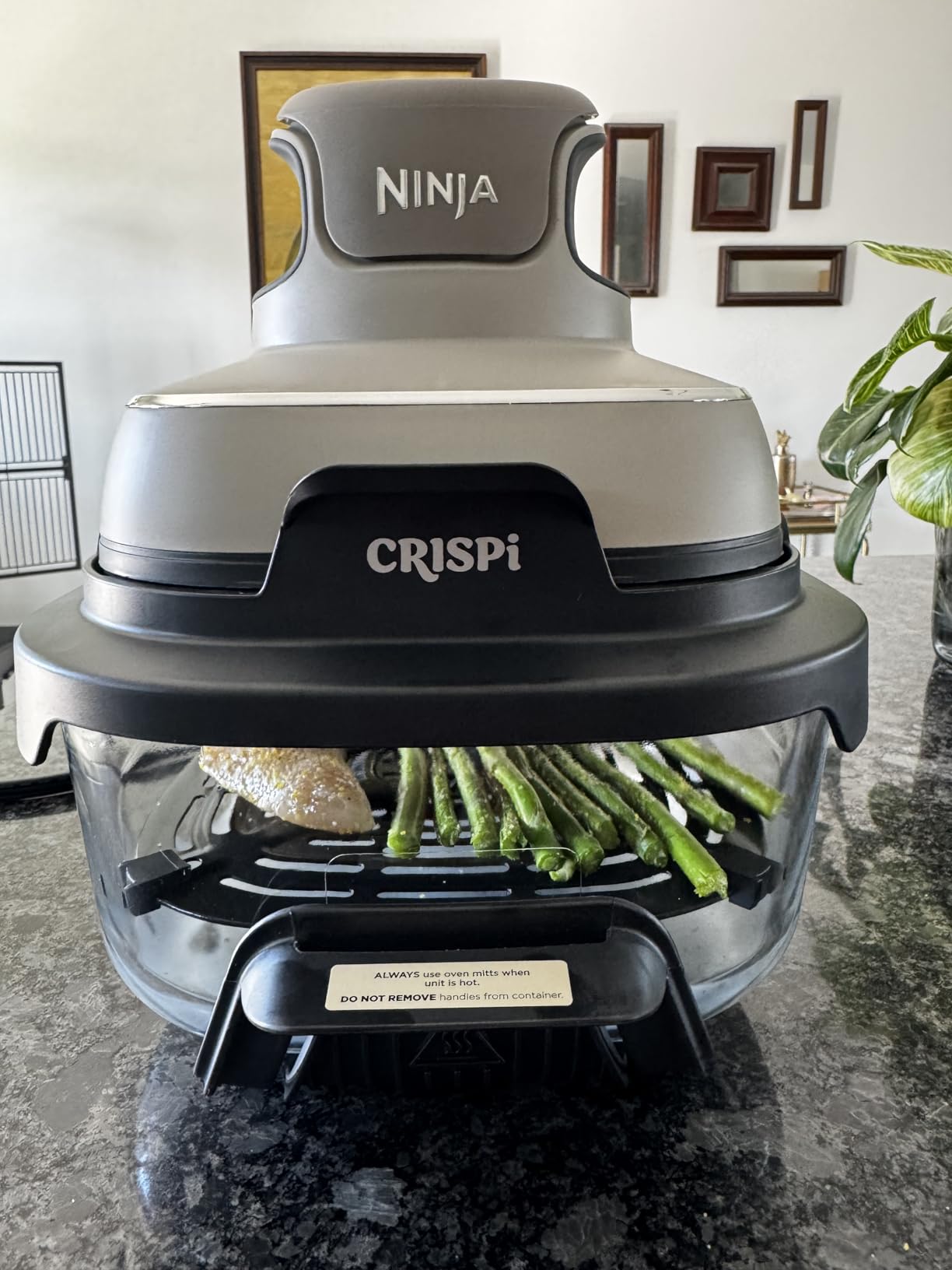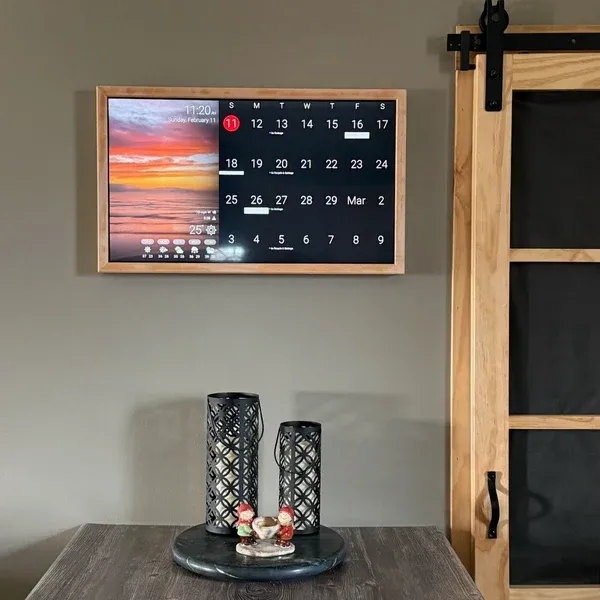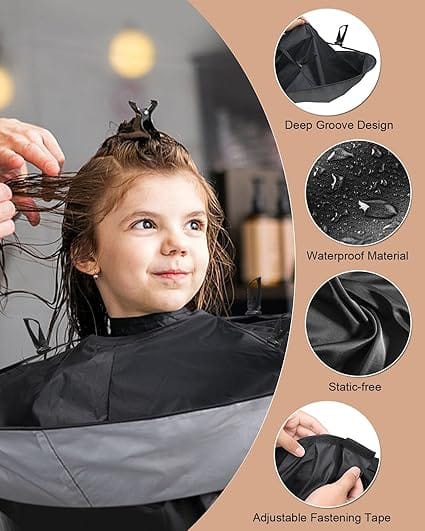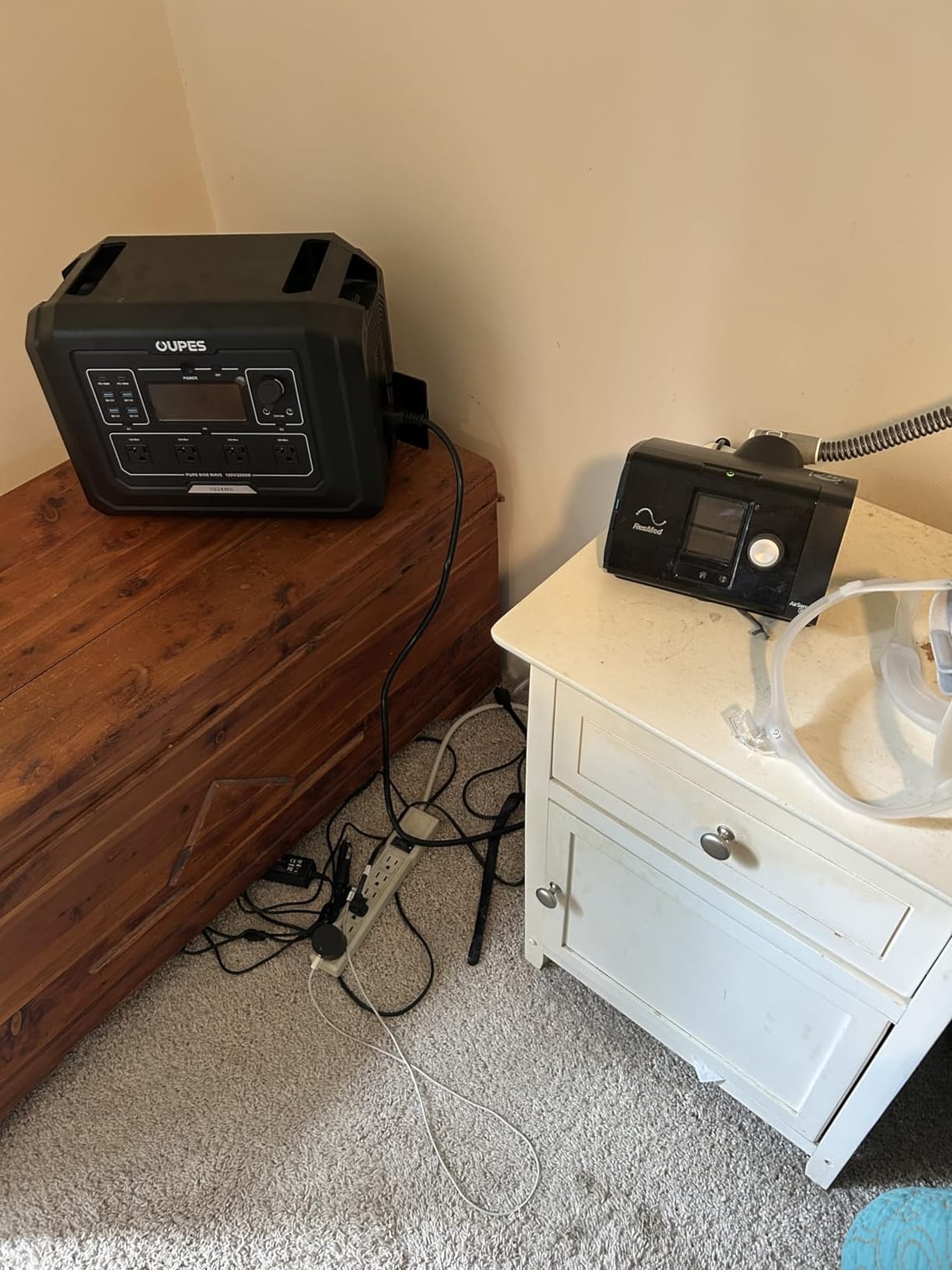
OUPES Mega 1: The End of My Power Outage Anxiety?
Author Byline: By David Miller / Last updated on August 16, 2025
Introduction
The lights flickered once. Twice. Then, darkness. That familiar knot of dread tightened in my stomach. Outside, the wind howled, and the rain hammered against the windows. Inside, my phone was at 15%, the food in the fridge was starting a countdown to spoilage, and my kids were already asking for a flashlight. I’ve lived in Texas long enough to know this is part of the deal, but I promised myself after the last big freeze: never again. It’s not about convenience; it’s about security. That feeling of helplessness is what pushed me to finally get serious about home backup power. I needed something powerful, reliable, and fast—not a toy. My research led me to a rising contender, the OUPES Mega 1. But could a brand I wasn’t as familiar with really deliver the peace of mind I was chasing? I had to find out.
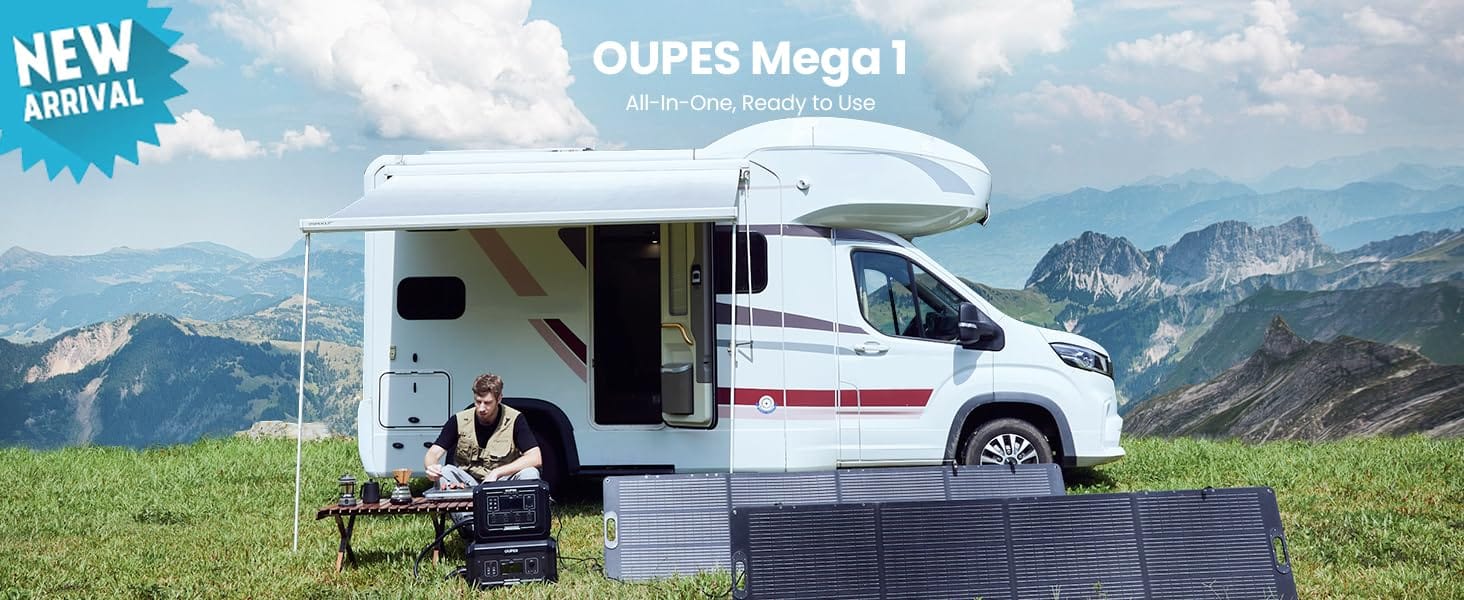
OUPES Mega 1: The End of My Power Outage Anxiety?
My honest review of the OUPES Mega 1 power station. After a recent storm, I tested its 2000W LiFePO4 power. Is it the reliable home backup you need?
The Bottom Line Up Front (BLUF)
Yes, the OUPES Mega 1 is an absolute beast and a phenomenal value. For anyone serious about home backup or robust RV/camping power, its combination of insane charging speed and a long-lasting LiFePO4 battery makes it a top-tier contender that punches well above its price tag.
Our Rating Breakdown
| Dimension | Rating (out of 10) | The Short Version |
|---|---|---|
| Performance (Power Output) | 9.5 | Easily powered a full-size fridge, microwave, and coffee maker without breaking a sweat. |
| Charging Speed | 10 | The 1400W AC input is genuinely game-changing. Fully charged from near-empty in about 70 minutes. |
| Build Quality & Durability | 9.0 | Feels dense and rugged. The LiFePO4 battery chemistry is the gold standard for longevity. |
| Portability | 7.0 | At nearly 50 lbs, it's transportable, not portable. This is a garage or RV-basement unit. |
| Value for Money | 9.5 | Delivers features and power comparable to premium brands, but at a significantly more accessible price point. |
| Overall Score | 9.0 / 10 | ✨✨✨✨✨✨ |
Key Specifications at a Glance
- Capacity: 1024Wh (Expandable up to 5120Wh with extra batteries)
- Battery Type: LiFePO4 (Rated for 3,500+ cycles to 80% capacity)
- AC Output: 2000W Continuous Power, 4500W Peak Surge
- AC Charging: Up to 1400W (0-100% in ~1.2 hours)
- Solar Charging: Up to 800W
- Weight: 46.3 lbs (21 kg)
- Outlets: 6x AC, 2x USB-C (100W PD), 2x USB-A, 1x Car Port
Unboxing and First Impressions
Pulling the OUPES Mega 1 from its box, the first thing you notice is the sheer density. This isn't a plastic toy; it feels like a serious piece of equipment. The handles are robust and well-integrated into the chassis, which is crucial for a 46-pound unit. There's no assembly required, which is always a plus. You just pull it out, and it's ready to go. The display is bright and clear, showing input, output, remaining battery percentage, and time-to-empty at a glance. It felt less like unboxing a gadget and more like acquiring a tool.
Putting It to the Test: Real-World Performance
To give the Mega 1 a proper trial, I simulated a full "power outage day" at my house. This isn't about charging phones; it's about maintaining a sense of normalcy.
First, the most critical test: the kitchen. I plugged in my full-size, 10-year-old refrigerator—a notorious energy hog. The Mega 1 didn't even flinch. The display showed it drawing about 150-200W when the compressor kicked on, and it ran it for hours with plenty of juice to spare.
Next, the morning routine challenge. I plugged in my 1200W coffee maker. Check. Then, I heated up breakfast in my 1000W microwave. Check. The Mega 1’s fan kicked in to manage the load, but it handled both high-draw appliances without any issue, thanks to that 2000W continuous output.
But the real showstopper is the charging speed. I ran the battery down to 5% and plugged it into a standard wall outlet. The input display immediately jumped to over 1350W. The fans whirred to life—it's not quiet while fast-charging—but watching the battery percentage tick up so rapidly was astounding. It went from 5% to 100% in just over an hour. This is a legitimate game-changer. During a real emergency, being able to fully recharge in a brief window of restored power (or from a gas generator) is an incredible advantage.
What Real Users Love (The Pros)
- Blazing Fast AC Charging: This is its superpower. Going from empty to full in about 70 minutes is unheard of in many competing models.
- Why this matters to you: No more 8-hour waits. You can get back to full power during a lunch break or a short window of grid availability.
- Modern LiFePO4 Battery: I specifically look for this battery chemistry now. It's safer, more stable, and offers thousands of charge cycles.
- Why this matters to you: This isn't a disposable gadget. With 3,500+ cycles, this unit is an investment that should last you for a decade or more of regular use.
- Expandable Ecosystem: The ability to add up to four extra B1 batteries to quintuple your capacity is fantastic future-proofing.
- Why this matters to you: You can buy what you need now and expand later if you get a bigger RV or want longer home backup, protecting your initial investment.
- Serious Power Output: With 2000W continuous and a 4500W peak, it can handle nearly any household appliance you throw at it, from refrigerators to power tools.
- Why this matters to you: Peace of mind. You don't have to wonder if it can run your microwave or coffee maker; it can.
Common Complaints & Potential Deal-Breakers (The Cons)
- It's Heavy: At 46.3 lbs, you won't be taking this on a hike. It’s designed to be moved from your garage to your car, or from your RV storage to your campsite.
- Why this matters to you: If you need power for backpacking or have trouble lifting heavy objects, you should look for a smaller, lower-capacity model.
- Fan Noise During Peak Load/Charge: When it's charging at 1400W or powering a heavy load, the fans are definitely audible.
- Why this matters to you: It’s not silent. You wouldn’t want it charging right next to your bed overnight. It’s best kept in a garage, kitchen, or living room.
- The App is Functional, Not Fancy: The companion app lets you monitor and control the basics, but it lacks the polished user experience of top-tier brands like EcoFlow.
- Why this matters to you: If you're a tech enthusiast who loves a slick app interface, this might feel a bit basic. But for core functionality, it gets the job done.
Is It Built to Last? Durability and Long-Term Value
This is where the OUPES Mega 1 truly shines. The biggest factor in a power station's longevity is its battery chemistry. The LiFePO4 (Lithium Iron Phosphate) battery is the star here. Unlike older Lithium-Ion batteries that might degrade after 500-800 cycles, the Mega 1 is rated for over 3,500 cycles before its capacity drops to 80%.
To put that in perspective, even if you drained and recharged it every single day, it would take almost 10 years to reach that point. For the average user who needs it for occasional outages or weekend camping trips, this battery is designed to last for decades. The outer casing is thick, durable plastic, and the solid-state electronics mean there are few moving parts to fail. This is a long-term investment in energy security, not a short-term gadget.
Best Alternatives (The Competition)
The OUPES Mega 1 competes directly with some of the biggest names in the business. Here are its two main rivals:
- EcoFlow DELTA 2: The industry benchmark. It has a fantastic app, a slightly more polished design, and the same LiFePO4 battery tech. However, its base AC charging speed is a bit slower (1200W), and it often comes at a higher price point.
- Anker SOLIX F2000 (PowerHouse 767): An absolute tank with a massive 2048Wh base capacity and even higher 2400W output. It’s a premium choice but is significantly heavier (67 lbs) and more expensive. It's a step up in both power and price.
Comparison Table
| Feature | OUPES Mega 1 | EcoFlow DELTA 2 | Anker SOLIX F2000 |
|---|---|---|---|
| Capacity | 1024Wh | 1024Wh | 2048Wh |
| AC Output | 2000W | 1800W | 2400W |
| AC Charge | 1400W | 1200W | 1800W |
| Battery | LiFePO4 | LiFePO4 | LiFePO4 |
| Weight | 46.3 lbs | 27 lbs | 67.3 lbs |
| Key Advantage | Best charge speed/value | Polished app & ecosystem | Highest power output |
Frequently Asked Questions (FAQ)
- What can the OUPES Mega 1 actually run?
It can run almost any standard home appliance. Think full-size refrigerators, microwaves, coffee makers, TVs, medical devices (like a CPAP), and power tools like circular saws or drills. Just check that the appliance's power draw is under 2000 watts. - How long will it take to charge with solar panels?
With its maximum 800W solar input, you could theoretically charge it from 0-100% in under 2 hours in ideal, direct sunlight. With a more common 200-400W solar array, expect a charge time of 3-6 hours. - Can you use it while it's charging (pass-through charging)?
Yes, absolutely. It supports pass-through charging, so you can power your devices from the unit while it's plugged into the wall or solar panels. - Is the OUPES Mega 1 better than a Jackery?
It depends on the model. Compared to most Jackery models, the OUPES offers faster charging and the more durable LiFePO4 battery technology for a similar or lower price. Jackery is a great brand, but OUPES often wins on pure specs and value. - How do you expand the capacity?
You purchase the separate OUPES B1 expansion batteries and connect them to the main unit with a specific cable. It's a simple, plug-and-play process. - Is it safe to use indoors?
Yes. Because it's a battery, it produces no fumes, no carbon monoxide, and is virtually silent when not under heavy load. It's perfectly safe for indoor use, unlike a traditional gas generator.
Final Thoughts & Recommendation
The next time the weather forecast looks grim, I won't feel that familiar anxiety. I'll just walk to the garage, check that the OUPES Mega 1 is at 100%, and know that my family will have power for the essentials. The fridge will stay cold, the lights will stay on, and we’ll be able to stay connected.
The OUPES Mega 1 isn't just another power station; it's a remarkably well-executed piece of equipment that delivers on its promises. It offers the speed, power, and longevity of premium brands at a price that makes sense for families looking for real security. If you're in the market for a serious home backup or RV power solution and value lightning-fast recharging and long-term durability, I can give the OUPES Mega 1 my strongest recommendation. It's a purchase that buys you genuine peace of mind.
Call to Action
Go ahead and check the latest price and availability. I think you'll be as impressed as I was.
Audience Growth & Engagement
"Become a WowShopList Insider"
"Love discovering products that are genuinely worth it? I know I do. Subscribe to my exclusive WowShopList Weekly newsletter. Each week, I send one personal email featuring the most unique, innovative, and valuable product I've found—my 'hidden gem' of the week. It's 100% free to join now, and you'll be locked in for life. We plan to make this a paid newsletter in the future, but our founding members will always get it for free."
"We hope this in-depth review helps you make a confident choice! To continue your research, check out some of our other popular guides:"
- The Best Solar Panels for Your Power Station: A Real-World Test
- EcoFlow vs. Anker SOLIX: Which Power Station Giant is Right for You?
- My Ultimate Home Emergency Prep Checklist (After Surviving a 3-Day Outage)
- Powering an Entire RV Off-Grid: Is It Actually Possible?
- LiFePO4 vs. Lithium-Ion: Why Your Next Power Station MUST Have This Battery
- How Much Power Do You Actually Need? A Guide to Sizing Your Generator
"Now I'd love to hear from you! Drop a comment below with your experience or any questions I didn't cover. I read every single one."








